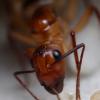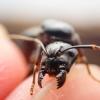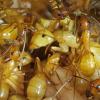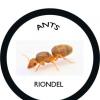September 3, 2018

So I happened to be taking out the trash and was walking back to my front door when I realized this beauty was hanging out on the column. I had a test tube setup within an hour of catching and soon put it away.
September 20, 2018
So what can I say, this lovely lady must have found her heated test tube quite comfortable because after a little over two weeks she had a decent amount of brood
October 27, 2018
So to avoid stressing this lovely lady out too much, I've decided that if I'm going to disturb her that it will only be once a month. It appears to have paid off; she has three substantial sized larvae along with what looks like four or five smaller ones.


Edited by WanderAnts, August 9 2019 - 8:04 AM.



























